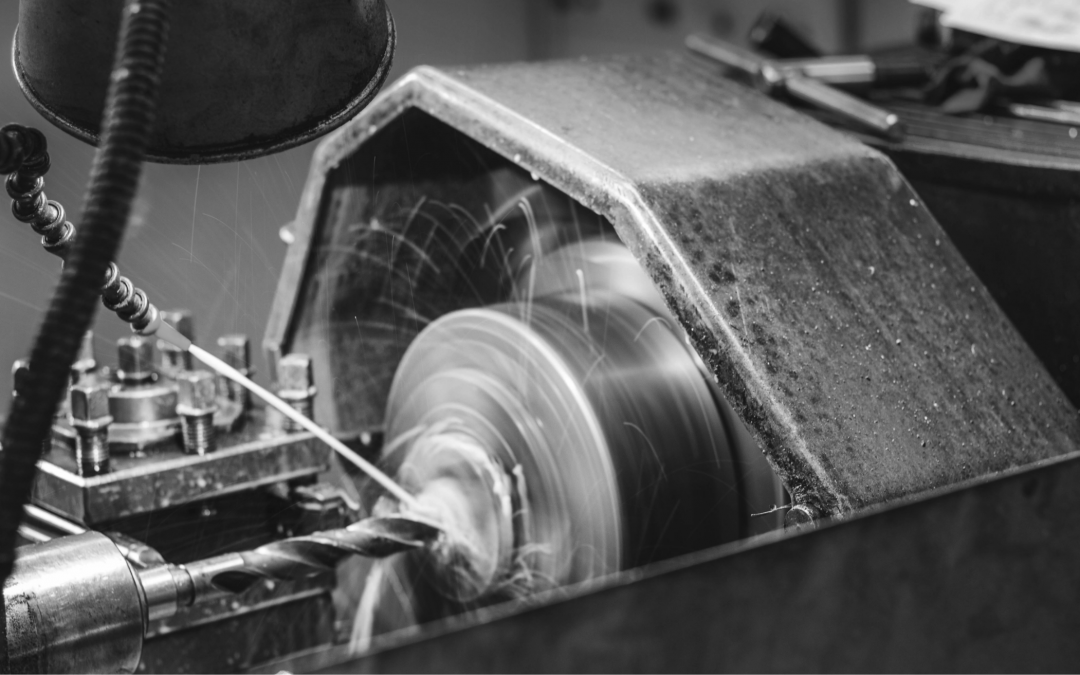Risks of Exposure to Metalworking Fluids (MWF)
The inhalation of – and direct contact with – metalworking fluids (MWF), has the potential to cause health issues. Direct contact with MWF can cause contact dermatitis. Inhalation of MWF in aerosol form can cause lung disease including occupational asthma and occupational hypersensitivity pneumonitis.
The Risks Involved
During the operation of Computer Numerical Control (CNC) machinery, metalworking fluids MWF become an aerosol mist. This creates a hazard due to imperfect seals in machinery enclosures. However, when the enclosure is opened again, the aerosol vapour released further increases in volume. Operations involving high-speed tools or deep cuts represent a corresponding increase in the scale of exposure. Furthermore, the use of hand-held compressed air guns for cleaning purposes after machining creates additional misting and further exposure risks.
Mitigating Risk
Limiting Exposure to MWF
A simple way to reduce exposure is to ensure only those who are directly engaged in the process are present. Workers that are directly involved in the process should remain at the maximum possible distance. This distance should allow oversight of the machining in hand but minimise exposure by proximity. Before opening the machine safety-guards, the observation of an appropriate time delay will reduce the concentration of MWF mist. This can be checked with the use of a dust lamp that will visibly reveal the presence of fine aerosol mists and indicate the appropriate time delay required before opening the guard. Furthermore, the provision of suitable rest and eating areas – at a safe distance from the working area – will ensure a reduction of exposure to direct contaminants.
Reduce MWF Flow
The flow and pressure of MWF should be reduced to the minimum level that allows effective lubrication of moving parts, cooling and swarf removal but discourages aerosol build up.
Local Exhaust Ventilation
The use of appropriate Local Exhaust Ventilation (LEV) will allow the discharge of MWF aerosols to a safe place – ideally outside of the building where possible. In circumstances where the extracted air is re-circulated inside the building, the use of a suitable air cleaning device will further improve residual air quality. For existing equipment, a retro-fitted roof panel can reduce aerosol volumes.
The design of any new CNC equipment should take into account considerations such as volume flow rate, location of the extraction point, the volume and dimensions of the enclosure and the level of mist generated from machining The provision of visible safety warnings such as airflow indicators would alert an operator to any build-up of MWF mist.
LEV Testing
LEV systems require a statutory LEV Test. It is essential that a consultant engineer or occupational hygienist should perform the test at least every 14 months. In addition to this routine test, daily checks should be undertaken before work commences to check for the accumulation of swarf that may accumulate around the extraction point. Airflow indicators should be checked to ensure the correct level of airflow. Furthermore, weekly checks will reveal signs of damage to flexible ducts and the filter housing. Any issues found should be promptly addressed.
Personal Protective Equipment (PPE)
The use of appropriate Personal Protective Equipment (PPE) will reduce direct exposure and should be considered where appropriate. Examples include gloves that extend to the forearm, overalls or face shields.
Health Surveillance
Where operators are frequently exposed to the risk of exposure to MWF whether directly or by inhalation of aerosols, there should be sufficient systematic procedural surveillance. This will ensure the safety of your workers and thereby to reduce the risks of contact dermatitis and lung conditions.
A health professional will help you establish an appropriate system of testing. The system should allow for a test to be done every few months but as a minimum, annually. A responsible person should be appointed to report any symptoms found in between the testing intervals and appropriate records kept.
We’re here to help
At Workplace Exposure, our expert team have experience working with a variety of different businesses to ensure they offer a safe, compliant working environment. Our professional solutions and advice help to ensure your business meets compliance standards and is operating to best practice. If you need help in carrying out a COSHH air monitoring survey to help select the correct PPE, or your workplace noise assessment, we’re here to help.
Our approach
Get in touch with Workplace Exposure. Either give us a call on 0800 689 4386, or fill in our enquiry form to discuss your monitoring or consultancy requirements.
We’ll then provide you with a no obligation proposal, we can often give an initial idea of fees whilst we discuss your needs.
Once you’ve accepted our proposal we can then schedule the work.
Following our site visit we’ll provide you with a comprehensive report giving you advice, recommendations and control measures where appropriate. Implement the outcomes for compliance and a happier healthier workplace.
